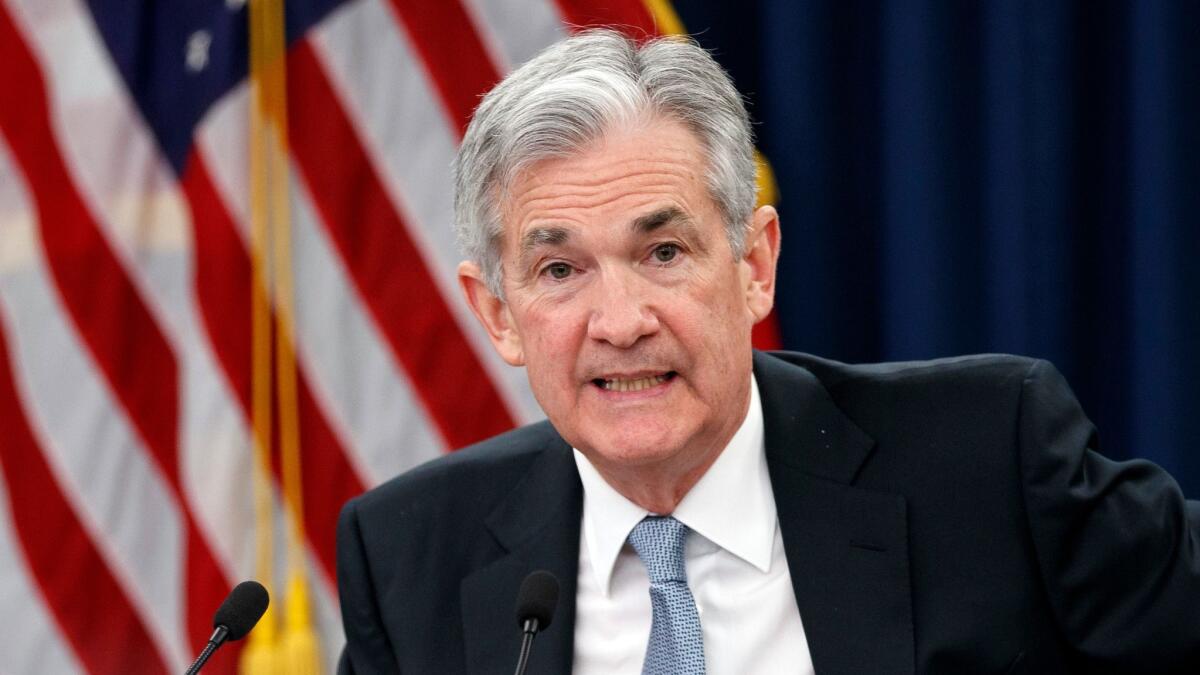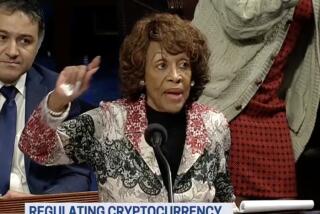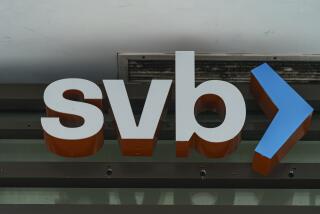Fed taking first step to scale back Volcker Rule limits on bank trading enacted after financial crisis

Reporting from Washington — The Federal Reserve Board on Wednesday took the first step toward loosening the Volcker Rule restrictions on investment trades by large banks as Republicans press forward with a deregulatory agenda sought by Wall Street.
The Volcker rule, mandated by the 2010 Dodd-Frank reforms spurred by the financial crisis, prohibits banks with federally insured deposits from trading for their own profit rather than on behalf of customers. They are also limited in owning or investing in hedge funds or private equity funds.
Such so-called proprietary trading by large Wall Street firms was a factor in the 2008 crisis as banks made risky bets on the market through stocks, derivatives and other complex financial instruments. When many of those investments backfired, taxpayers ended up picking up the tab through hundreds of billions of dollars in bailouts.
In revisions developed jointly with other regulatory agencies, the Fed’s staff proposed to focus compliance on the banks that do the most trading. Proprietary trading still will be prohibited, Fed officials stressed, but the revisions are designed to give banks more clarity and leeway about what constitutes such trading and what is allowed when they seek to trade for hedging and other purposes.
Banks with smaller trading operations would get reduced requirements, with many getting the presumption that they are in compliance with the Volcker Rule.
Still, the changes fall well short of the hope of many Republicans and industry executives to repeal or gut the rule.
“Our goal is to replace overly complex and inefficient requirements with a more streamlined set of requirements,” Fed Chairman Jerome H. Powell said at the central bank’s board meeting Wednesday.
He said the proposed changes were “faithful to both the text and spirit of the law.”
The Fed’s Board of Governors voted 3-0 Wednesday to formally launch a rule-making process based on the proposal. The public will have a chance to comment.
Despite the bailouts, financial industry lobbyists have pushed back strongly against the Volcker Rule restrictions, which were enacted in 2013 after regulators from five agencies spent three years crafting them. They took effect in 2015.
Banks have complained that complying with the Volcker Rule has been overly burdensome. But that hasn’t stopped profits from soaring in recent years. The Federal Deposit Insurance Corp. reported last week that U.S. banks had a record $56 billion in profits in the first quarter of the year.
With a slew of new financial regulators appointed by President Trump, the Fed and other agencies that oversee the Volcker Rule have jointly developed a proposal to ease the rules.
“It will be among the most significant set of regulatory concessions Wall Street banks will get for the foreseeable future,” Ian Katz, an analyst at strategic research firm Capital Alpha Partners, wrote in a report this week.
Kenneth E. Bentsen Jr., president of the Securities Industry and Financial Markets Assn. trade group, said the Fed’s effort “represents the growing recognition by policymakers of the unintended negative impact due to the excessive complexity of the current regulations.”
Paul Volcker, who headed the Fed from 1979 to 1987 and later advised President Obama, said he welcomed “the effort to simplify compliance” with the rule as long as it does “not undermine the core principle” of prohibiting taxpayer-backed banks from engaging in risky proprietary trading.
But supporters of Dodd-Frank warned that the changes could put taxpayers at risk for future bailouts.
“Given the irresistible riches generated by proprietary trading, it is inevitable that weakening the Volcker Rule will result in banks again pushing the envelope, gaming the system and ramping up their dangerous trading,” said Dennis Kelleher, president of Better Markets, a group that advocates stricter financial regulation.
Under the proposal, banks with trading operations of at least $10 billion in assets would be required “to have a comprehensive compliance program.”
There are about 18 such banks, and they account for about 95% of trading activities, Fed officials said.
Banks with between $1 billion and $10 billion in trading operations would have “reduced compliance requirements that would be tailored in light of their relatively smaller and less complex trading activities,” according to the Fed proposal.
Banks with trading operations of less than $1 billion would get “a rebuttable presumption of compliance with the rule,” the proposal said.
The proposal also would remove the presumption now in the Volcker Rule that any stocks, derivatives or other investments purchased by banks that they hold for less than 60 days are proprietary trades. A bank also would be presumed to be in compliance if its daily net gains or losses from trades are less than $25 million over the previous 90 days.
The proposal was drafted under the oversight of new Fed Vice Chairman Randal Quarles, a Trump appointee. Powell is a Republican who already was on the Fed board but picked to be chairman by Trump.
Fed Gov. Lael Brainard, a former Treasury official in the Obama administration and a strong supporter of Dodd-Frank, also voted for the proposal.
“While the purpose of the Volcker Rule is compelling, our experience with its implementation suggests the inter-agency rule has turned out to be needlessly cumbersome in practice,” she said.
The rule was the brainchild of Volcker, who pushed for it to be included in the sweeping Dodd-Frank overhaul of regulations enacted to try to prevent a future financial crisis. He has argued that proprietary trading created conflicts of interests between the banks and their customers.
Federally insured banks historically had been barred from proprietary trades under the Glass-Steagall Act that was enacted in 1933 following the Wall Street excesses that led up to the 1929 market crash. The prohibitions were partially lifted in 1999 under legislation signed by President Clinton. Critics claim the rollback contributed to the 2008 financial crisis.
Last June, the Treasury Department recommended significant changes to the Volcker Rule in a report calling for a major rollback of Dodd-Frank. But Treasury officials did not recommend repealing the Volcker Rule, as have some congressional Republicans.
“Undue compliance burdens must be eliminated in order to eliminate unnecessary impact on market liquidity,” the report’s summary said. “Treasury supports in principle the Volcker Rule’s limitations on proprietary trading and does not recommend its repeal.”
Regulators can loosen the rule on their own. A repeal would require congressional approval, which is unlikely given strong Democratic opposition.
Small banks already are getting relief from the Volcker Rule in a bipartisan bill President Trump signed last week. The legislation, which focuses on rolling back Dodd-Frank regulations for community and regional banks, exempts institutions with less than $10 billion in total assets from complying with the Volcker Rule.
The Fed must work with four other financial regulators — the FDIC, Office of the Comptroller of the Currency, the Securities and Exchange Commission and the Commodity Futures Trading Commission — to revise the regulations. Those agencies are expected to vote in the coming days to begin considering the Volcker Rule changes.
Twitter: @JimPuzzanghera
UPDATES:
1:55 p.m.: This article was updated with additional detail and comments from Paul Volcker and Kenneth Bentsen of the Securities Industry and Financial Markets Assn.
12:30 p.m.: This article was updated with the Federal Reserve Board’s vote and comments from Dennis Kelleher of Better Markets.
This article originally was published at 11:50 a.m.
More to Read
Inside the business of entertainment
The Wide Shot brings you news, analysis and insights on everything from streaming wars to production — and what it all means for the future.
You may occasionally receive promotional content from the Los Angeles Times.











